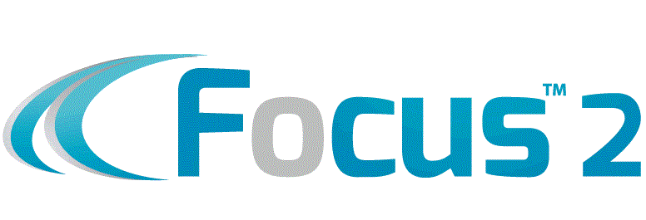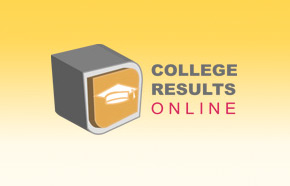College Grads Expand Lead in Job Security
By CONOR DOUGHERTY from the Wall Street Journal
GARY, Ind.—Fifteen years after high school, the working lives of Tremell Sinclair and Phyllis Sellars have evolved very differently, largely because of a single decision.
That decision has always shaped their economic prospects, but never more so than during the recent recession: Ms. Sellars kept her white-collar job, recently landing a pay raise, while Mr. Sinclair was laid off from his forklift driving job last year and only just found a new one—at a 46% lower salary.
The classmates illustrate a divide between the fortunes of Americans with college degrees and those without. It's not only that the college educated earn more, but that they are far more likely to keep their jobs when times get tough.
By some measures, recession has exacerbated the divide. The unemployment rate for workers 25-and-older with a bachelor's degree or higher was 4.6% in August, for example, compared with 10.3% for those with just a high-school diploma. That's a 5.7-percentage-point gap, compared with a gap of only 2.6 percentage points in December 2007 when the recession began.
Laid-off college graduates are also finding work faster. Their median duration of unemployment was 18.4 weeks as of August, compared with 27.5 weeks for high-school grads. Three years ago, that figure was roughly the same for both groups—9.5 weeks and 9.6, respectively. And among the worst-off 25-and-older workers, the 5.2 million who have been out of work six months or more, only 19% are those who graduated from college, even though that group makes up a third of the work force.
Yet because college is increasingly expensive and doesn't guarantee a good job at a good wage, skepticism about the value of college is rising, even as the government pours more money into helping people get degrees. As part of the health-care legislation passed in March, Congress approved a student-loan overhaul that replaces private lenders with the federal Department of Education and redirects some $60 billion to community colleges and programs such as Pell Grants, which are college loans for the needy.
To economists who look at the numbers, college is a necessary, even if not sufficient, ticket to the middle class. "We are experiencing a period of shared misery, where workers at all education levels are struggling, including those with a college degree," says Lawrence Mishel, president of the Economic Policy Institute, a left-leaning Washington think tank. Still, he says, "It is certainly evident that those with college educations are faring much better than those with less education."
Not that a diploma is the slam-dunk it once was. It no longer guarantees a wage that rises faster than inflation. And while people with four-year college degrees make, on average, 64% more than those with only high-school degrees, that wage premium hasn't climbed much since 2001, after rising sharply for two decades.
Meantime, the unemployment rate for people with a college degree or higher, though lower than others', is the highest it has been since comparable data begin in 1979, according to an analysis of Labor Department data by the Economic Policy Institute. Even in the early 1980s recession, when national unemployment hit 10.8%, the rate for people with college degree or higher never eclipsed 3.9%.
College tuition has also grown faster than the rate of inflation for more than two decades, including a 6% increase in 2009—a period when overall prices fell. Some 64% of Americans thought college was a good investment in July, down from 79% a year earlier, according to a telephone poll of 3,000 individuals conducted in July for Country Financial, a Bloomington, Ill., financial-services company.
In Gary, many still see college as a ticket out of town. The predominantly African-American city sits on the tip of Lake Michigan, just outside Chicago. The city was named for a founder of United States Steel Corp., Elbert Gary, and steel remains the biggest private industry. But over the decades, Gary has hemorrhaged manufacturing jobs.
At a recent reunion picnic for West Side High's class of 1995, the school's orange-and-blue colors were everywhere, coloring tablecloths, balloons and even the shoelaces of Shantel Douglas, the reunion's primary organizer. The recession has hit almost everyone, she says, which is why she made it a "recession friendly" weekend. Instead of in a restaurant or hall, she held the picnic on the worn playing fields behind the school. The school let them gather there for free.
Ms. Sellars, 33, says she still feels tightly connected to her alma mater. Raised by a single mother, she says the industrial decline she saw growing up made her determined to get an education. She studied hard and gravitated toward friends also bound for college. Mr. Sinclair was part of her high school group of friends and on occasion she has gone to dinner with him on visits to Gary.
Lately, though, she says, the two haven't spoken as frequently, in part because she is so busy at work. "I'm busy and have a high-stress job," she says.
After West Side, Ms. Sellars majored in sociology at Indiana University. After graduation she went to work at Covance Inc., which is based in Princeton, N.J., but has facilities in Indianapolis. Her first job with the company, which runs clinical-drug trials, was editing company manuals.
Ms. Sellars worked her way up through progressively better jobs. In January was promoted to supervisor in a division that receives samples sent in for processing. She bought a condominium in 2004, and shares responsibility for overseeing 52 employees.
"I knew if I didn't go to college, I wouldn't have had a chance," she says.
Mr. Sinclair, 34, says he thought about going to college, too. But his mother couldn't afford to send him. Instead, he got a $12-per-hour job operating heavy equipment after he graduated. Over the years he worked his way up through a series of blue-collar jobs, topping out at $24 per hour driving a forklift.
But then last summer, just before his high-school class began planning its 15-year reunion, he got laid off. He spent a year seeking work as a heavy-equipment operator, and also in retail stores. He says he got a callback from Menards, but didn't pursue it after he learned that job paid less than his unemployment checks.
Mr. Sinclair says he recently found another forklift job. But it doesn't start until October and pays only $13 an hour, about as much as he was making just after he graduated.
To keep costs low during his unemployment, he cut out cable television and restaurant meals. Instead of paying for the reunion barbeque, Mr. Sinclair set up a backyard grill in the parking lot, where he cooked chicken wings he'd brought from home in a plastic bag sealed tight with marinade. "It's rough," he said as he turned the wings over with tongs.
Workers like Mr. Sinclair were losing ground relative to their college-educated counterparts long before the recession. Workers with a college degree or more saw inflation-adjusted hourly earnings grow 20%, on average, between 1979 and 2007, while those with graduate and professional degrees saw a 31% rise, according to an analysis of government data by David Autor, an economist at the Massachusetts Institute of Technology. Earnings for workers with a high-school diploma fell over that period.
That actually understates the case, Prof. Autor adds, because degree-holders generally have jobs with better health-care and retirement benefits.
Despite this, the recession has sharpened a longstanding debate about the value of a college degree. For Brandon Fleming, another 1995 West Side graduate, the burden of college debt loads, coupled with stagnant wages, has made him question whether it was worth getting his diploma.
He attended Kentucky State University and today is a compliance analyst at an insurance company in Indianapolis. He makes just under $40,000 a year, almost as much as he had in loans for college and an MBA degree. "I wouldn't tell someone not to go to college," he said as he ate his reunion lunch behind his old high school. "But they have to go in with the proper expectations, and I didn't understand that."
His classmate, Rick "Big Rick" Castillo, went to a technical college but dropped out after a year to work at a local steel mill. Now he makes $58,000 annually, enough to afford things like the shiny Ninja motorcycle he rode to the reunion. "It's one of the better jobs in the area," he says.
Today, with unemployment at 9.6% and 15 million people looking for work, employers are receiving a flood of resumes from college-educated workers who might not have applied for jobs that require less education when times were better. That's another obstacle to applicants with less education.
Ms. Sellars has seen this up close. The employees she oversees aren't required to have college degrees, though some do. Recently, the company has seen a spike in applications from candidates with bachelor's degrees, says Deborah Tanner, a senior vice president at Covance.
"We have probably hired more degreed people [in Ms. Sellars' unit] that we had in the past," says Ms. Tanner. "What the recession has done is broadened the talent pool."
The Wall Street Journal article here
Need help reducing your costs of a college degree, contact us now!





